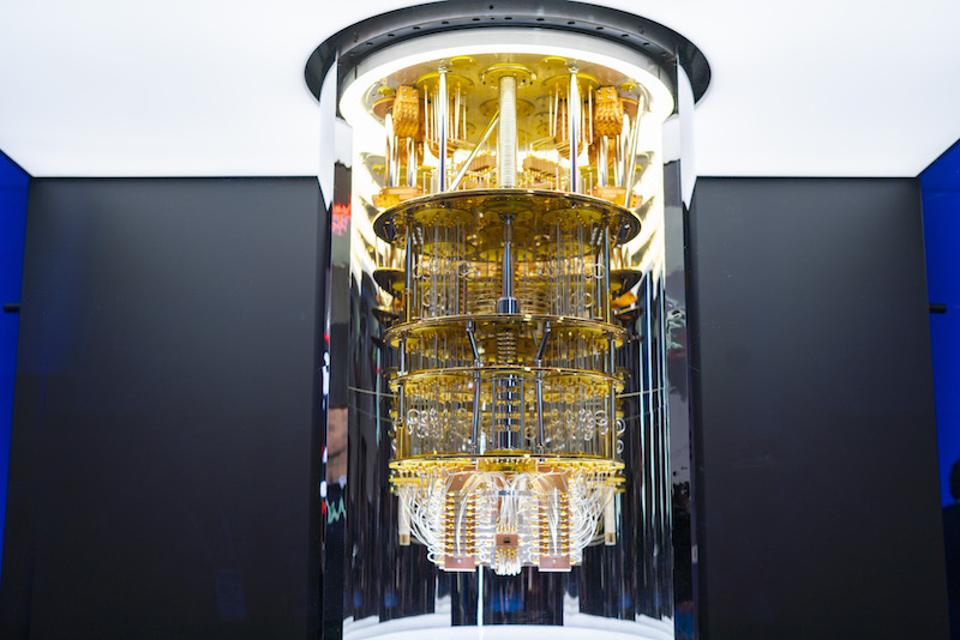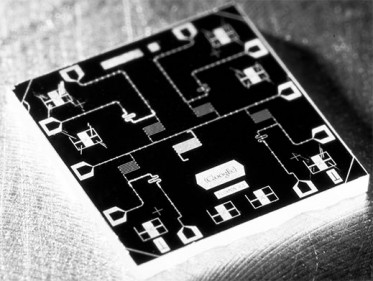4.75/5 (16)

The producers of processors are facing a serious problem. In a few years, building faster processors with the technology as we know it will not be possible anymore. So far, building faster processors was essentially a matter of placing as many transistors as possible on one chip. The more transistors, the faster the chip. As Gordon Moore (co-founder of Intel) observed in 1965, the number of transistors per square inch on integrated circuits had doubled every year since the integrated circuit was invented. He stated that this trend would continue for the foreseeable future. This is known as the Moore’s Law. Regarding computer processors, it is possible to upgrade their performance by building smaller transistors and placing more and more on one chip. Nevertheless, this process is about to reach its limit. As soon as chip technology reaches the atomic level, the density of transistors reaches a physical limit. To give you an idea how dense the transistors are placed, in the year of 2000, 37.5 million transistors could be placed on one chip, in 2017 IBM projects to place 20 billion (yes billion) transistors on one chip. The most recent manufacturing techniques used are performed on a 7 nanometer scale. As a comparison, a human hair is approximately 80,000- 100,000 nanometers wide. The limit where it is still feasible financially to develop a chip would be 7 nanometers. A leading scientist in the field, Colwell, emphasized that by 2020 the limit of Moore’s Law, currently about 5 nanometers, will be reached.
What does that mean for the computer industry? Will we be stuck with the same processing power for years?
There are some promising alternatives that have yet to be fully translated from theory into practice. Next to alternatives like increasing the performance of storage drives,
overclocking processors while cooling them down to almost absolute zero,
one alternative seems most assuring.
Quantum computers are what organizations like Google, IBM or the NASA are looking into.
A prototype quantum annealer by the company D-Wave, recently acquired by Google, was able to perform a task a 100
million times faster than a convential processor. Or 10,000 years faster than a convential computer. This task is not performed easily though. The quantum computer needs to be cooled to a hundredth of a degree Celsius above absolute zero (−273.15°C), in order to create a somewhat stable environment. That is the reason the quantum computers as of today are called quantum annealer. The quantum annealer is also very sensitive to electromagnetic waves, like visible light, radio, infrared or x rays. It is therefore considered to be yet extremely unstable and very costly to use. This makes it very difficult to scale, since you cannot build a laboratory around a quantum annealer every time you want to upgrade your performance.
The technique behind it is fascinating however.
Imagine a switch that you can either switch on or off.
That is how bits of today’s computers essentially work. They can either represent a 1 or a 0.
A quantum computer bit however, called qubit, can represent a 1, a 0 or both at once. This is confusing enough, however the possibilities do not stop here. With each qubit added to another, the total number of potential states doubles. Two qubits can represent a state of 00, 01, 10 and 11 at the same time.
This is an example of so called superposition.
This opens up seemingly endless possibilities in terms of performance. It means that the more data the computer has, the faster it is.
Now remember the problems that we are not yet able to solve, since we are missing the computer performance to analyze or calculate all the variables. Popular examples are simulating molecules in their entirety, compute any scientific experiment virtually, crack any so far known encryption technique, airline scheduling, financial analysis, cancer radiotherapy, gene research or simply improve web search.
Some scientists state that the creation of the first universal quantum computer will be similar to society as switching on the first self-sustaining nuclear reaction in Chicago in 1942. That definitely changed the world as we knew it. Luckily, The most recent quantum computer are not there yet and can only be used for very narrow, specific tasks. A so called universal quantum computer however can be applied to many processes, much like a PC of today – only a million times faster.
Do you have ideas for further applications of the process powers offered by quantum computers? What are in your opinion dangers or opportunities for quantum technology? As an example, Google is on the forefront of building a quantum computer, what are Google’s capabilities with their collected data?
References
Aaronson, S., & Technology, M. I. of (2013). Quantum computing since Democritus. Cambridge, United Kingdom: Cambridge University Press.
Adiabatic quantum computation (2016). . In Wikipedia. Retrieved from https://en.wikipedia.org/wiki/Adiabatic_quantum_computation
Aron, Jacob. (2016, August 31). Revealed: Google’s plan for quantum computer supremacy. Retrieved October 1, 2016, from https://www.newscientist.com/article/mg23130894-000-revealed-googles-plan-for-quantum-computer-supremacy/
Boixo, S., Isakov, S. V., Smelyanskiy, V. N., Babbush, R., Ding, N., Jiang, Z., … Neven, H. (2016, July 31). Title: Characterizing quantum supremacy in near-term devices. Retrieved October 4, 2016, from https://arxiv.org/abs/1608.00263
Crothers, B. (2013, August 28). End of Moore’s law: It’s not just about physics. Retrieved October 4, 2016, from https://www.cnet.com/news/end-of-moores-law-its-not-just-about-physics/
Finley, K. (2014, September 5). The Internet finally belongs to everyone. Retrieved October 4, 2016, from Business, https://www.wired.com/2014/09/martinis/
Freiberger, M. (2015, October 1). What can quantum computers do? Retrieved October 4, 2016, from https://plus.maths.org/content/what-can-quantum-computers-do
Gaudin, S. (2015, December 15). Quantum computing may be moving out of science fiction. . Retrieved from http://www.computerworld.com/article/3015538/emerging-technology/quantum-computing-may-be-moving-out-of-science-fiction.html
HuChenming— (2016). Moore’s law. In Wikipedia. Retrieved from https://en.wikipedia.org/wiki/Moore%27s_law#Near-term_limits
Simonite, T. (2016, February 4). Inside Google’s quantum computing lab, Questing for the perfect computer. Retrieved October 4, 2016, from https://www.technologyreview.com/s/544421/googles-quantum-dream-machine/
Launching the quantum artificial intelligence lab. (2013, May 16). Retrieved from https://research.googleblog.com/2013/05/launching-quantum-artificial.html
Staff, datascience@berkeley. (2014, March 5). Moore’s law and computer processing power – Blog. Retrieved October 4, 2016, from https://datascience.berkeley.edu/moores-law-processing-power/






